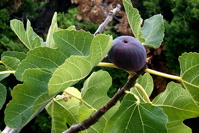Seed Starting Fun
I have a nice older seed-starting rolling stand on the porch, with two deep tray shelves and adjustable fluorescent lights. It's served me well in the past. If I could figure out a way to keep two extremely energetic 9-month old kittens out of it, yet still have easy access to tend my seedlings, I would use it!
Having come up with no practical ideas (easy access for me and no access for them) I'm going to use the dryer top and just bring seedlings outside for the day to get sunshine, bring them back in at night, until they are big enough to transplant. Instead of growing my own eggplants, peppers, and tomatoes this year, I'll buy seedlings of those. Next year when the kittens are older and hopefully less zany I can see about using the seed-starting stand.
Last night after work I did some garden stuff, filling pots and bringing them inside to start seeds where it's warm. They are on the dryer where the kittens can't get them and where it will periodically be extra warm. I used a plastic tray and plastic containers to make sure I won't get dirt and water on the dryer.
I have 5 different squashes planted: Georgia Candy Roaster, Italian Ramipicante, Maori Kamo Kamo, Sweet Dumpling, and Sunshine Kabocha.
I started a pair of cucumbers, a Beit Alpha and a Renee's Persian cucumber. I like small, thin-skinned cucumbers that you can eat right off the vine without peeling, yum!
I also started two six packs of chard, both pretty colors-- the red-n-white stripe stalk Peppermint and the old faithful Bright Lights with red, orange, and yellow stalked versions. Finally I did a pair of six packs of herbs, Vierling blue-green dill and Slow-Bolt cilantro.
I thought about starting lettuce, but most of my seeds were very old, from 2006 and 2007, so I scattered a bunch outside on my long garden bed and we'll see if I get any volunteers from there. I'll buy fresh seed of the kind I want and plant a six pack or two.
For planting outdoors, a number of years ago I made these Square Foot Garden Guides at TechShop on the Epilog laser cutter. They're made out of sturdy acrylic, and have the various cultivars that go with each spacing etched on the surface of the planting guide.
I use the guides for planting, with a chopstick to poke the holes. Tonight after work I planted 3 squares of yellow wax bush beans, 3 squares of Roma green bush beans, a square of baby bok choi, 2 squares of chiogga beets, and 2 squares of golden beets. Phew! BTW, the sun angle is just completely wrong in the picture below, and hides the etched lettering on the guide, wups.
I stopped by OSH tonight and picked up some Forellenschluss heirloom lettuce seed. OK, Renee's seeds is calling it by the translated name, "speckled trout back" lettuce, but it's the same thing. I need to poke around some and find Batavian Nevada lettuce-- it naturalizes easily in my yard and I really like the mild taste and frilly green heads. I'm not sure if I'm going to start the lettuce in 6-packs (I'm running out of dryer space) or just seed in the ground. Probably the latter.







































